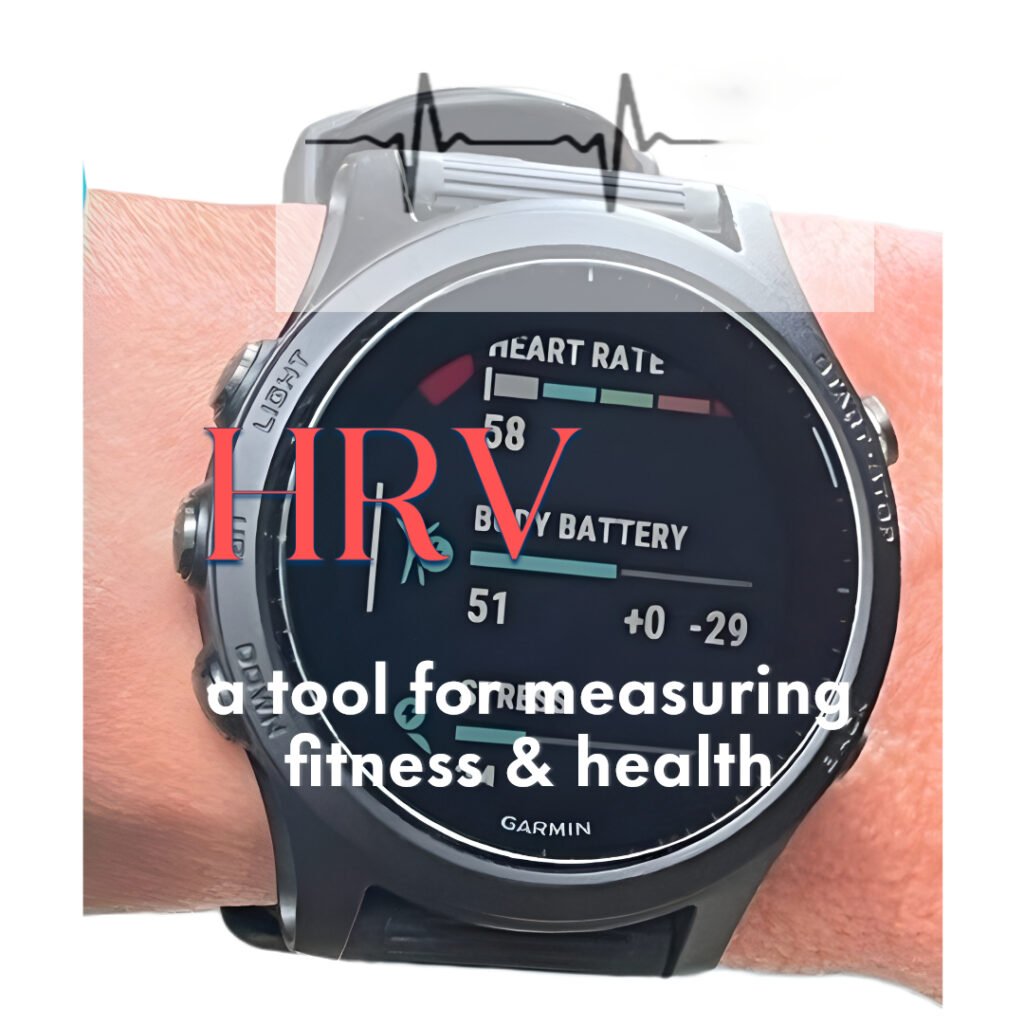
We use Heart Rate Variable to monitor the effects of stress on our body and to assess our overall recovery and workout readiness. A high HRV indicates health and fitness, while a low score links stress and fatigue. Heart rate variable suggests our workout readiness, allowing us to adjust our training when our body is tired and avoid overtraining.
What is Heart Rate Variable, and how does it work?
HRV measures the variation in time between heartbeats in milliseconds. A normal, healthy heart does not beat evenly like a metronome; there is constant variation. Heart rate variable is one of the functions that the autonomic nervous system (ANS) regulates. The ANS comprises the sympathetic and parasympathetic branches. These branches signal the hypothalamus when to stimulate or relax different functions.
The parasympathetic system slows the heart rate and increases HRV to restore homeostasis once the stress passes.
The sympathetic side activates stress hormone production, increases cardiac output, and decreases HRV, which is necessary during exercise and mentally or physically stressful situations. The two systems allow the heart to respond quickly to different situations.
In healthy individuals, Heart rate variable increases during relaxing activities when the heart is beating slower and decreases during stress or exercise when the heart beats faster. Chronic stress, poor sleep, unhealthy diet, and lack of or too much exercise can disrupt this balance, and your fight-or-flight response can shift into overdrive.
Tracking HRV
In recent years there’s been a rise in athletes using heart rate variable wearables and apps to measure and track heart rate variable to assess readiness to train and overall recovery. As such, it may be helpful once you’ve established your baseline HRV to monitor trends in fitness, fatigue, and readiness to compete.
However, data acquisition using these devices may be suboptimal because they cannot discriminate between the sinus and non-sinus beats and do not record any data regarding respiratory frequency; this information is mandatory for a correct clinical interpretation. Hence the need for establishing a baseline heart rate variable.
What Happens to HRV During the Menopause Transition?
When looking at how we’re recovering, we can’t rely specifically on HRV when we have a lot of hormone perturbations during perimenopause. And in post-menopause, they are flat-lined, so the hormonal influences on the vagal nerve are altered. In both cases, you have more fight-or-flight activity and less rest-and-digest activity, especially after menopause.
There is minimal research on active women in the peri and postmenopausal phases of their lives. HRV decreases in the menopause transition, establishing a new lower baseline in post-menopause. So we have to track our patterns from that lower baseline HRV.
The existing algorithms were created for men and cannot accurately predict proper recovery because they do not detect this change. When we look at how this physiological decrease affects recovery and recovery scores, we need to monitor our trends in HRV, respiratory rate, and sleep quality. When you see lower HRV and higher respiratory rate (especially with poor-quality sleep), it’s time to back off.
To increase your HRV, you need to step in and activate those parasympathetic responses with changes to your lifestyle and behavior. Practice good sleep hygiene. Mindfulness, breathwork, yoga, and outdoor exercise are strong vagus nerve stimulants. Getting enough essential amino acids can also help reduce central fatigue and as can reducing alcohol consumption because it lowers HRV.
Ribeiro TF, Azevedo GD, Crescêncio JC, Marães VR, Papa V, Catai AM, Verzola RM, Oliveira L, Silva de Sá MF, Gallo Júnior L, Silva E. Heart rate variability under resting conditions in postmenopausal and young women. Braz J Med Biol Res. 2001 Jul;34(7):871-7. doi: 10.1590/s0100-879×2001000700006. PMID: 11449305.
The postmenopausal group showed significantly lower median values than the young group. Compared to young women, the results indicate a decrease in parasympathetic modulation in postmenopausal women. Possibly due to age and hormonal factors.

Comments are closed.